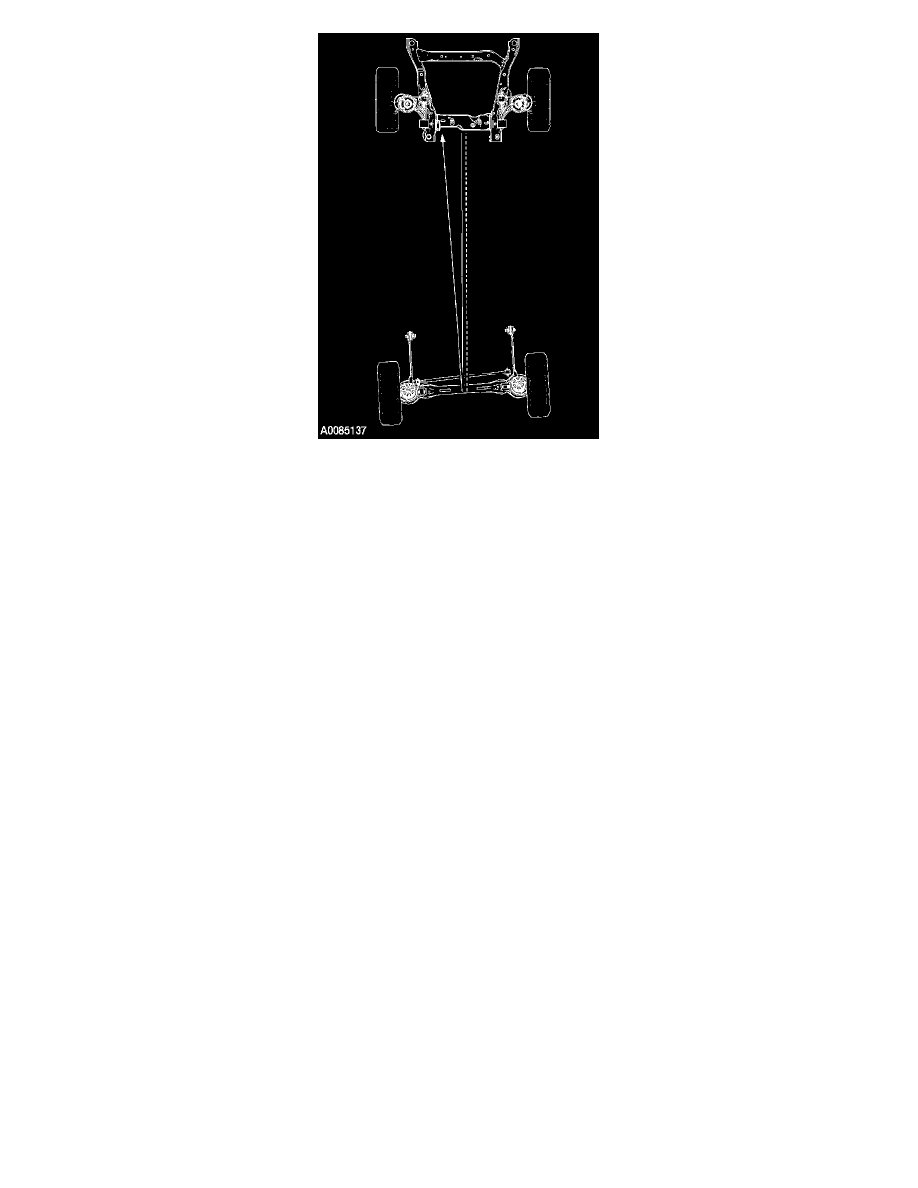Freestar V6-4.2L VIN 2 (2004)

Thrust Angle
^
Rear thrust angle can be defined as a line bisecting rear toe or simply, the direction in which the rear wheels are pointed.
^
Rear thrust angle = (LR toe minus RR toe) / 2
^
If the rear wheels are pointed to the right, thrust angle is positive; if the rear wheels are pointed to the left, thrust angle is negative.
Wander
Wander is the tendency of the vehicle to require frequent, random left and right steering wheel corrections to maintain a straight path down a level
road.
Dogtracking is the condition in which the rear axle is not square to the chassis. Heavily crowned roads can give the illusion of dogtracking.
Shimmy
Shimmy, as observed by the driver, is large, consistent, rotational oscillations of the steering wheel resulting from large, side-to-side (lateral)
tire/wheel movements.
Shimmy is usually experienced near 64 km/h (40 mph), and can begin or be amplified when the tire contacts pot holes or irregularities in the road
surface.
Nibble
Sometimes confused with shimmy, nibble is a condition resulting from tire interaction with various road surfaces and observed by the driver as small
rotational oscillations of the steering wheel.
Poor Returnability/Sticky Steering
Poor returnability and sticky steering is used to describe poor return of the steering wheel to center after a turn or steering correction.
Drift/Pull
Pull is a tugging sensation, felt by the hands on the steering wheel, that must be overcome to keep the vehicle going straight.
Drift describes what a vehicle with this condition does with hands off the steering wheel.
^
A vehicle-related drift/pull, on a flat road, will cause a consistent deviation from the straight-ahead path and require constant steering input in the
opposite direction to counteract the effect.
^
Drift/pull may be induced by conditions external to the vehicle (i.e., wind, road crown).
Poor Groove
Feel Poor groove feel is characterized by little or no buildup of turning effort felt in the steering wheel as the wheel is rocked slowly left and right
within very small turns around center or straight-ahead (under 20 degrees of steering wheel turn). Efforts may be said to be "flat on center."
^
Under 20 degrees of turn, most of the turning effort that builds up comes from the mesh of gear teeth in the steering gear. In this range, the
steering wheel is not yet turned enough to feel the effort from the self-aligning forces at the road wheel or tire patch.
^
In the diagnosis of a roadability problem, it is important to understand the difference between wander and poor groove feel.
Low Tire Warning (LTW) System
The Low Tire Warning (LTW) system detects differences in inflation pressures in one or more tires. The system uses the ABS wheel speed sensors to
monitor the rolling radius of the wheel and tire assemblies. If a difference in rolling radius is detected, the ABS module illuminates the LTW lamp
